Chau Thoi Pagoda
To arrive in the pagoda, tourists can walk on 220 concrete steps built by monks in 1971 or drive along another path . Most tourists like taking a stroll on the path shaded by greenish trees because they can enjoy the beautiful scenery and wholesome air on the mountain.
|
The path with 220 steps leading to Chau Thoi Pagoda shaded by rows of trees.  The pagoda’s three-entrance gate. 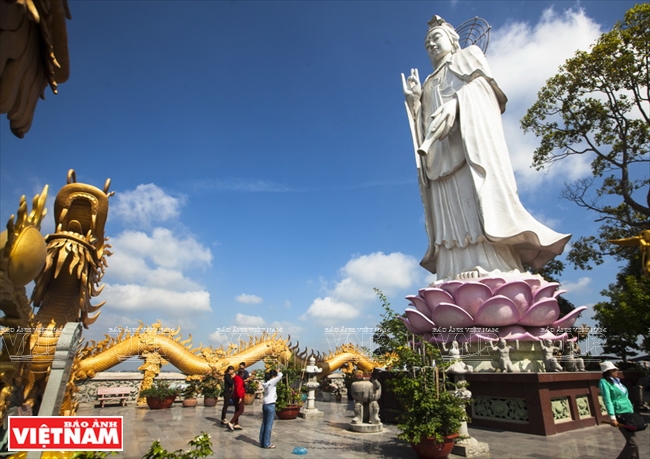 The Bodhisattva kuan-yin statue on a throne, 22.5m in height is displayed in the yard. 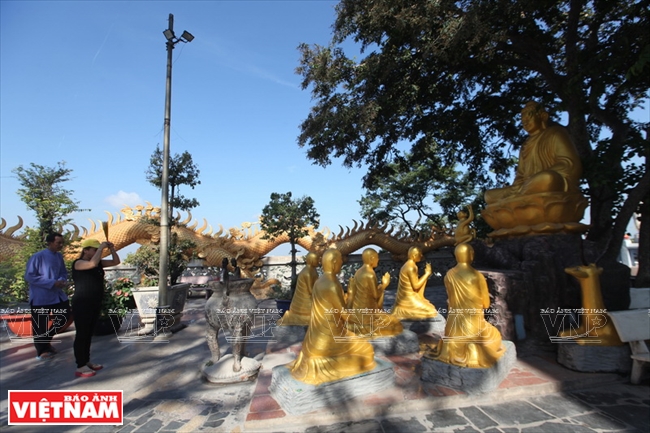 The statues of the Buddha and his disciples sitting at the foot of a bodhi tree . The statue of Bodhissattva kuan-yin. The giant golden dragons in the yard of the pagoda. 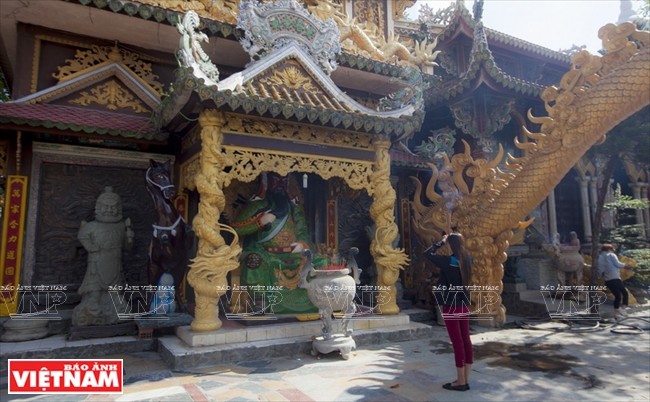 Chau Thoi Pagoda is the oldest in Binh Duong Province. 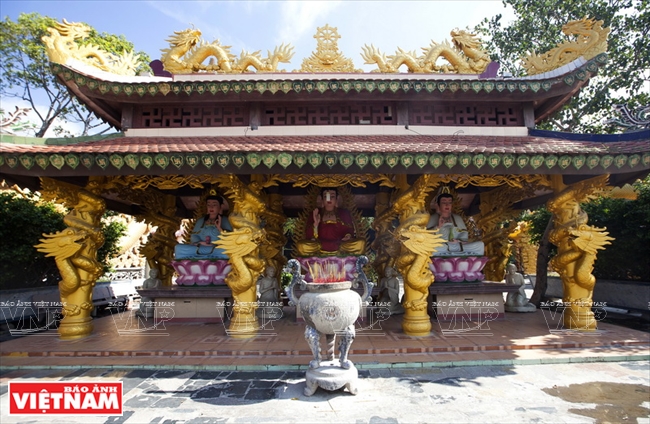 The complex of Chau Thoi Pagodaconsists of some typical architiectural works. |
The precinct of the pagoda is spacious and displays many Buddhist statues, including the highest statue in the province, Bodhisattva kuan-yin statue on a throne which is 22.5m in height and 100 tonnes in weight in the yard. From the pagoda, tourists can see part of Ho Chi Minh City, Bien Hoa city, Thu Dau town and the winding Dong Nai River.
The pagoda has preserved about 55 valuable ancient objects, including two sets of ancient earthen Thap bat la han ( Arhat statues) and Thap dien Diem Vuong (Ten Kings of Hell), a statue of Bodhisattva Kuan-yin hundreds of years old, a statue of Ba Chua Xu made from green stone and three stone Buddha statues dating from the 18th century. It also has a great bell, 1.5tonnes in weight and 2m in height, cast in 1988 in the style of the one in Thien Mu Pagoda in Hue and a bronze bell cast in 2003 with a weight of 5tonnes.
With its unique position, serene beauty and cultural values, Chau Thoi Pagoda was ranked as a national relic in 1989.
|
Chau Thoi Pagoda is the place where an exhibition of sarira of Buddha and Buddhist monks together with 500 arhats was held in 2009. It was a sacred event for Vietnamese Buddhist followers because it is rarely held in Vietnam. After being displayed at Chau Thoi Pagoda, the sarira were then taken to be exhibited in many countries in the world and buried in Tay Tang. |
The post https://vietexplorer.com/lifestyle/chau-thoi-pagoda/ appeared first on Vietexplorer.com.
View more from VietExplorer:
Vietnam – France concert marks 110th anniversary of Hanoi Opera HouseTerraced fields in Dien Bien basin
Webinar highlights preservation of Xam singing in contemporary society
Hanoi in the eyes of the youth
Christmas cheer in HCM City despite pandemic
VinFast to launch 3 new electric car models at Las Vegas Auto Show
Soft outside, crunchy inside
17th Ho Chi Minh City Tourism Festival kicks off
Party chief asks police to be more drastic in fighting corruption
Exhibition on ethnic, religious affairs opens in Bac Giang
The World Press Photo Exhibition 2021 opens in Hanoi
Serene ambience of Duong Lam historic village attracts visitors
Binh Lieu – Untouched beauty in Quang Ninh
Mass flight cancellations as Typhoon RAI approaches
Hanoi – Binh Dinh tourism cooperation in the “new normal” period
Manchester United suffer COVID-19 outbreak
Da Nang plans to “activate” local tourism from October 20
Dak Nong an epic of rocks & water
Vietnamese handicrafts displayed on digital platform
Miss Vietnam among 13 finalists in Top Model competition for Miss World

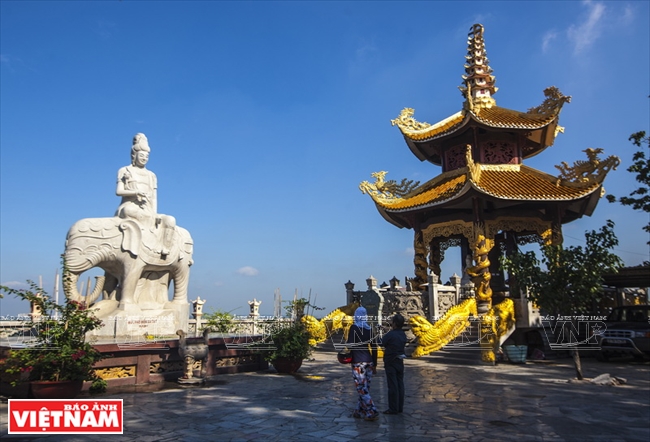
Comments
Post a Comment